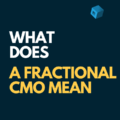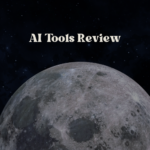Write after knowing the intent of your audience, they told. Write high quality content that resonates with them, they told this too. What they did not tell is your content should also have an intent. After all, your content is good as long as it supports a unique personality, isn’t it?
While the purpose of content is to entertain, educate, persuade and convert, how it is presented with which thoughts behind it is important too. Some content lives for years, some die instantly, some need device specific delivery and some are pushed strategically for intended outcomes.
Best content marketing efforts succeed because they produce targeted content, not just content as it is. Read about different unique content types – and how to use them strategically to achieve desired results.
- Value-added content
Value added content is often one of its kind content that is unavailable elsewhere; usually populated with actionable information exclusive to a brand/individual and its/his experience.
In other words, value added content are specific experiences that when shared can help others achieve desired outcomes. Value added content can be broken down in a variety of ways, and need not necessarily be the reflection of a work engagement, although experiences support true values.
Common types of value-added content with examples –
Blog posts – Publish a post explaining how you solved a customer problem, how using your products can address someone’s challenges instantly. Having experts’ personal opinion about a topic is another way to produce useful value-added content
Videos – Add a dash of unique personality into your content strategy by having original, in house videos. Videos are perhaps the most effective value-added content if you consider how dynamically and emotionally it can connect with an audience that share common interests with the content producer.
More – Case studies, those with a lot of data, insights and actionable information are perfect examples of value-added content. E books, How-Tos, Infographics etc can also work as value-added content as long they produce unique, insightful information that your audience can use to solve a problem at work.
2. Customer focused content
Many brands that lack content leadership often publish content that’s driven by internal stakeholders. Rather than targeting audience, their content seeks to satisfy the publishing priorities of an complaining CEO, a confused employee or overly proud sales team.
This is the outcome of not having clear content goals, or lack of coordination between the sales and creative team, or the failure to talk about the right thing in the meeting.
Writing for your audience is not enough without clear answers to these questions –
- Who is your target audience?
- What type of content their reading habit would prioritize
- What are the primary problems and challenges customers come to you to solve?
- How specifically, does your help solve their problems?
- Whether the content produced will connect with users during different stages of the sales funnel
Value added content are often direct, pinpointed, and thus save readers time, and delivered as expected. They don’t focus on irrelevant stuff, rather carry focused message presented to help the reader.
Testimonials are a great way to prove your credibility. But they serve your own ambitions. Other than creating (perhaps) a good image on target audience, they actually don’t add more values. Your readers want to know how you can help them, not how awesome you are.
But re purposing the testimonial in a case study can be exactly what your target audience is needing. Often times, comments on your and customers’ blogs offer great ways to understand what your customer needs.
Sometimes it is confusing to narrow down exactly what a customer needs to read in a blog post fast, particularly if you don’t know who is reading the content. For such cases, content formatting helps. Putting jump links as a small step acts big to help a reader instantly find desired content
Customer-focused content could be any type of content – starting from blog, press release, case studies etc. You need to understand in which sales funnel the buyer is and accordingly plan your content.
- For leads – ads, product/service focused landing page, video, infographics, checklists
- To engage prospects – blog, social media, e books, case studies, webinars, reviews, emails
3. Evergreen content
As simple as the name stands for, evergreen content refers to the content that’s steadily relevant, remains in trend nearly always, even long after it was published. Such content never goes out of date, and continues to draw attention over time. These are the content that gathers steady search interest and organic traffic.
List of evergreen key phrases
- Olympics
- Cricket score
- How to rank in Google
List of not evergreen key phrases
- Barcelona Olympics 1992
- Cricket score between India and Pakistan, 2019
- Top Google ranking factors 2020
Evergreen content support the stability of a site with SEO and other benefits. It steadily drive targeted traffic, improves search engine ranking and positions you as a thought leader
They help in the long run or as long as the search intent remains. If you are looking for more traffic in short amount of time, they fail. Also ever green content is not evergreen if it is not updated.
In the above example, How to rank in Google will no longer remain evergreen if it is not updated regularly.
Different types of evergreen content –
- Frequently Asked Questions (FAQs)
- Tutorials
- “How To” Guides
- Resources
- Glossaries of Terms
News articles, statistics are not evergreen content.
4. Adaptive content
This is another type of customer-focused content but with more targeted intention. This type of content is usually super planned and is designed to address the needs, goals, and mood of the target audience.
“Glad to see you are back. We missed you! Please browse through our recent articles to see what you have missed”
Ever seen a message like this when as a subscriber you log in to a website after a long period of inactivity? This is an example of adaptive content. Adaptive content is all about producing content that resonate with the reader, that understands the reader and maintains a humanly touch. It enables two way communication – an essential marketing strategy!
5. Engaging content
Engaging content offers unique perspectives, and truly intrigues the reader with increased dwell time. However, what makes a content engaging is debatable. What is engaging for you may not for others. But to go by the popular perceptions, an engaging content is easy to understand, effortless to consume!
What could make a content engaging –
- Attention grabbing title
- Proper use of headlines and subheadings
- Talks about the audience
- Usually short and simple
- Factual and actionable
- Includes visual elements
- Use language of the reader
- Elicit response
- End with a hope, solution!
As you could see the purpose of content – whether in message and format – is to engage readers and rive profitable outcomes. So while preparing your next content marketing strategy, make sure to keep readers at the center of your decision.
That’s it for now. We will update this article regularly so as to make it evergreen! 🙂 If you’ve liked the article, please leave your comments!






